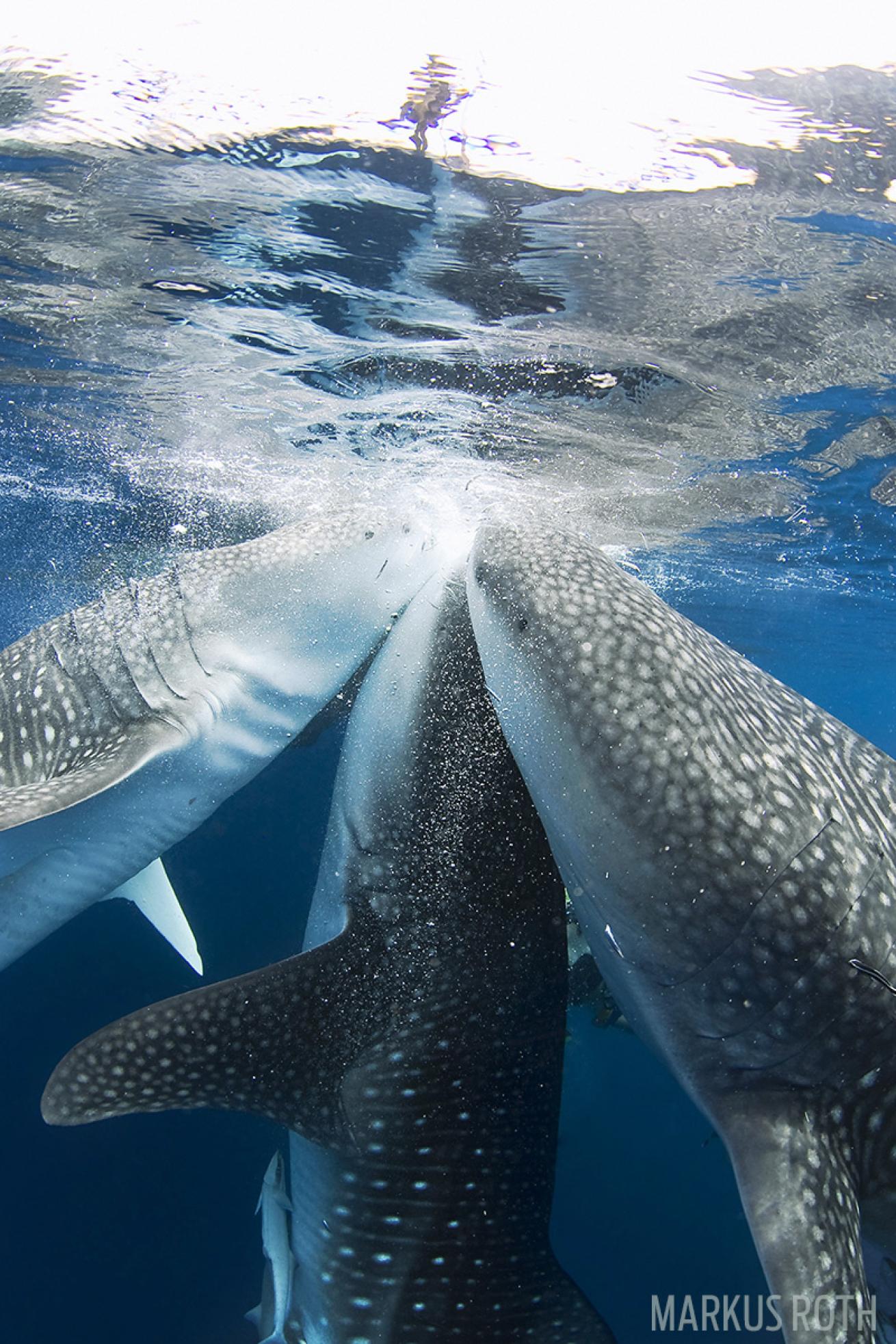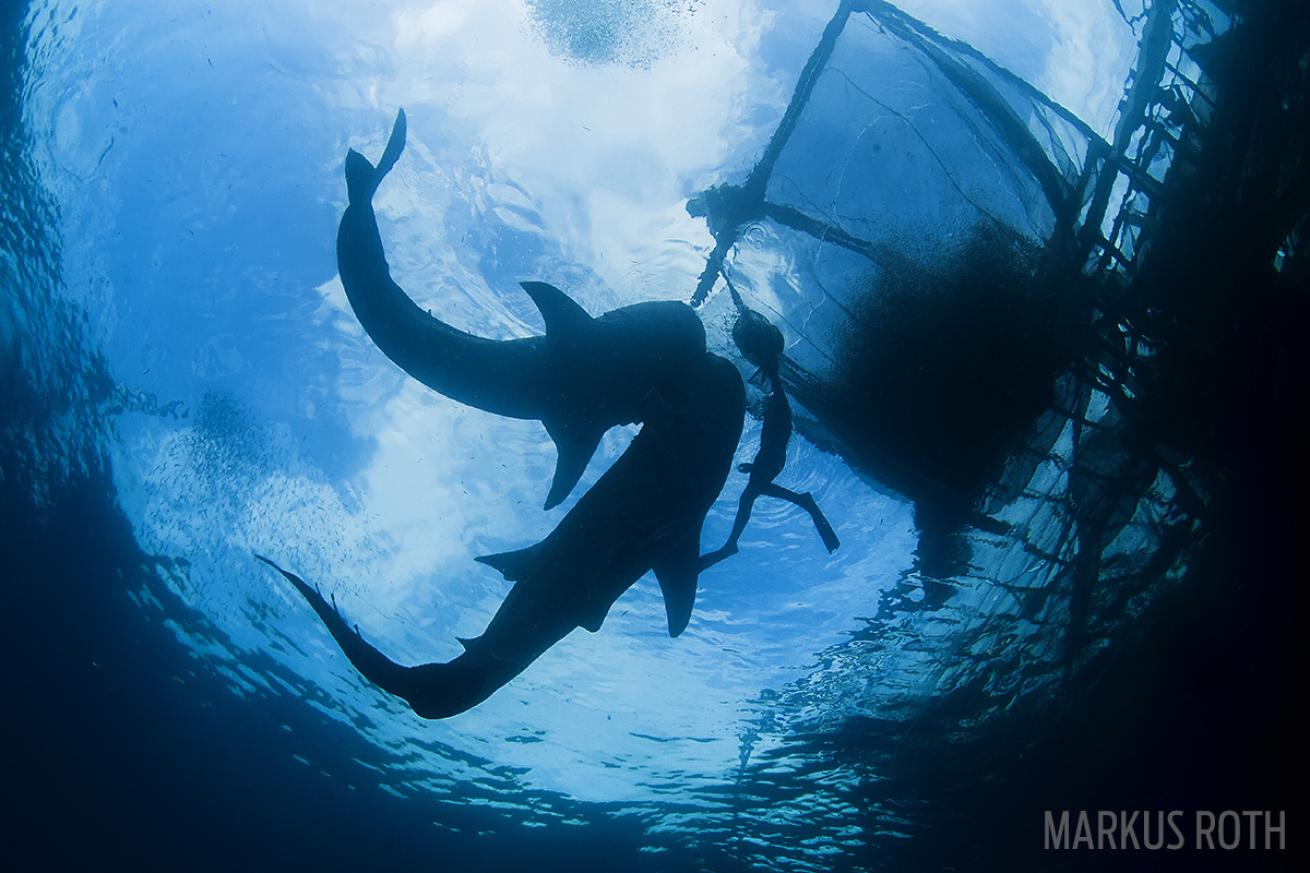Responsibly Scuba Diving With Whale Sharks
These majestic fish are facing a whale of a problem — and it's caused by us.

Markus RothWhale sharks feed in Indonesia's Cenderawasih Bay.
The world’s biggest fish perpetually comes in near the top of most scuba divers’ underwater wish lists. Divers will travel great distances for the chance to slip into the water with whale sharks. Despite the massive size of these gentle giants — about the size of a school bus — whale sharks are shy, and because they spend their lives wandering the open oceans, encounters with Rhincodon typus are often fleeting.
Unlike other sharks, whale sharks are not apex predators that snap up seals or fish with dagger-studded jaws. Instead, their 5-foot-wide mouths are lined with hundreds of rows of tiny teeth, and they filter-feed on planktonic prey. It’s the pursuit of food that often brings whale sharks into the same regions year after year. Near Placencia, Belize, for example, their annual arrival on the Mesoamerican Barrier Reef coincides with the springtime spawning events of cubera and dog snappers. These fish spawn on the days around the full moon, and sharks show up to feed on the clouds of eggs floating in the water.
Although a handful of whale shark hot spots exist along the Mesoamerican Barrier Reef in the western Caribbean, the Atlantic Ocean is home to only 25 percent of the world’s whale shark population, and there are no guarantees that you'll see them — or even one. The other 75 percent lives in the Indo-Pacific, where they are frequently sighted from the Red Sea to Western Australia’s Ningaloo Coast.

Markus RothWhale sharks looking for a meal of baitfish in Cenderawasih Bay.
Unfortunately, whale shark population numbers are dropping. In 2016, the International Union for Conservation of Nature (IUCN) recategorized whale sharks from vulnerable to endangered, estimating their numbers have declined by about 50 percent in the past 75 years. Very little is known about how the sharks reproduce. They birth live young, and the females are thought to reach sexual maturity at about 30 years old.
At almost every whale shark hot spot in the world, shark encounters are seasonal, migratory affairs. But in some places, irresponsible whale shark watching is on the rise. At Cenderawasih Bay, in West Papua, Indonesia, whale sharks have learned to feed by sucking baitfish from nets that hang from local fishing boats. In Oslob, Philippines, feeding has changed the sharks’ migratory patterns and exposed them to injuries from boat propellers. Even Holbox and Mujeres islands — whale shark hot spots off Mexico’s Yucatan Peninsula — have become overwhelmed by less-than-careful operators.
Wherever scuba divers travel to see these magnificent sharks, it’s important to interact with them responsibly and to use operators committed to responsible whale shark watching, which includes never touching or riding the sharks, taking care not to crowd them, and never blocking them from the front.
Facts About Whale Sharks
Size 40 feet
Weight 40,000 pounds
Life Span Unknown, but thought to be at least 100 years
Conservation Status Endangered
Fun Fact The skin on a whale shark's back can be 4 inches thick
Check Out The Best Destinations For Scuba Diving With Whale Sharks










